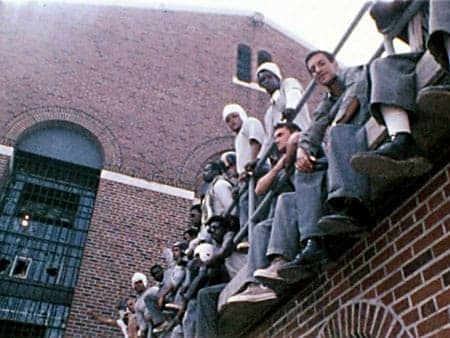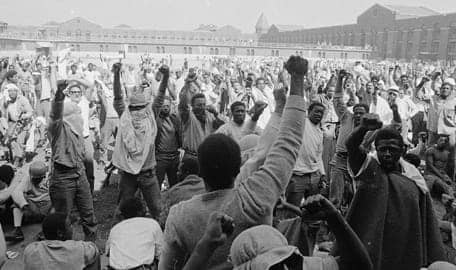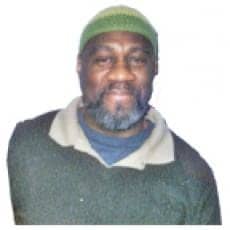 |
| WHAT WOULD THE WORLD BE LIKE IF WE WERE ALL JUST A LITTLE LIKE THESE TWO NUNS |
Operation Breakthrough celebrates 40 years, mostly of miracles
Chris Waxter, 23, (right) first attended Operation Breakthrough when he was 8, and now he’s a regular at the center at 3039 Troost Ave. Sister Berta Sailer (standing at left) and Sister Corita Bussanmas (seated center) and Waxter were photographed in a playroom for infants this week. The center will host an anniversary event today to celebrate 40 years.
Ahead of today’s 40-year reunion at Operation Breakthrough, Sister Berta, 74, and Sister Corita, 77, laugh like schoolgirls about the old days.
Starting a child care center without any money. Rain pouring through the roof. The day the IRS showed up with no smile and a fat bill. Sister Berta grinding gears trying to get a bus up a hill. Sister Corita running a jackhammer.
The great idea to keep the center going by running a gas station. A landlord pulling a gun and chasing Sister Corita. The “flower children” who worked for $20 a month and a cot in the St. Vincent’s convent.
The stories come as if from war veterans who talk about their buddies and fun times — without mentioning the fighting and the casualties.
Pushed, however, these two founders of Operation Breakthrough, Berta Sailer and Corita Bussanmas, tell of the children lost.
The toddler who never wanted to leave at the end of the day. His father beat him to death one night while his mother turned up the TV loud so she wouldn’t hear.
The two nuns sat at his funeral and listened to the Barney theme song, wondering what they could have done to save him.
And Chuck, 4. With Sailer’s car stopped at a light in front of a fire station, the little boy said from his car seat that if he grew up he wanted to be a fireman.
In telling the story, Sailer lets the qualifier sink in.
“If” he grows up.
He didn’t.
Hundreds of the thousands of children who attended Operation Breakthrough since 1971 are expected to return today for a reunion celebration. Adults now, some with children of their own at the center, many of them credit the two nuns and the place for saving them from mean streets, volatile homes, poverty — and themselves.
“No matter what problems we had or what we’d been through, when we walked in there, we knew we were safe,” Aaron Randle, now 22, said Friday.
“I basically grew up there. We went to museums and concerts — things most of us never would have gotten to do. That place is part of who I am and will be with me forever.”
Randle recently graduated from Howard University in Washington, D.C.
After a shaky beginning 40 years ago, the center today stands on a busy midtown corner as a model of early childhood education, a bright and gleaming world of hope for 550 children who know this is the place to hang their coat.
From a leaky roof to a wall in a cluttered basement office covered with honors and awards. Senators, governors and high rollers have plopped down on classroom floors to read to children.
The nuns have been to Washington to talk about urban child care. They’ve met Hillary Clinton and Michelle Obama.
“What those two have done on that corner is amazing,” said Jim Caccamo, director of early learning for the Mid-America Regional Council and longtime observer of child care in Kansas City. “No matter how hard it got, they never gave up.
“Most humans don’t have that kind of staying power.”
Sailer and Bussanmas also have taken 70 foster children into their home, and adopted four others, including a 17-year-old girl developmentally disabled from being born addicted to 12 drugs.
But they don’t want medals for what they’ve done for children.
They know they didn’t save them all.
“We’ve got a couple on death row,” Sailer said.
•••
Rich Koch, who had come to Kansas City from New York City, couldn’t believe the kids at the school next door couldn’t play basketball.
African-American kids in an American inner city can’t make a layup? Really?
“I thought all black kids were good at basketball,” he said one cold day to a nun on the playground.
It was 1970, the school was St. Vincent’s at 31st Street and Flora Avenue, and the nun was Corita Bussanmas.
She eyed the long-haired young white man like he was prey.
“You want to coach?” she asked him.
Koch had just graduated from college and had come to Missouri with friends doing volunteer work. The draft loomed. Vietnam.
“I’m not a coach,” he told her. Didn’t know anything about coaching.
Next thing he knows, he’s driving a car crammed with boys to a game where they get pounded by 30. Koch figures it was about 30 because that was the average margin of defeat in losing every game that year.
Once they were down 48-0 in a game when a St. Vincent’s player nails a half-court shot at the buzzer.
Never mind it’s the wrong basket. The boy is mobbed by teammates, who celebrate like they had won the NBA championship.
“The other team is acting like — what the heck is going on?” Koch remembered last week.
Surely his coaching days were over, he figured.
He had no idea what was headed his way.
The school was in trouble. The diocese wanted to shut down St. Vincent’s school because of a lack of Catholic students.
But Sailer and Bussanmas — the two had met in Chicago in 1958 — were ready to fight for their kids.
They told the diocese they would run the school themselves.
“Have you got any money?” officials asked.
“Sure,” Sailer lied through her teeth.
Last week in telling the story, the nun said with a chuckle: “We might have had $50 and we were going to run a school.”
They needed teachers and asked Koch to stay on.
“I’m not a teacher,” he told them.
They asked if he had a college degree.
He probably started to feel a little like Homer Smith in “Lilies of the Field.”
“Yes,” he answered.
“You’re a teacher,” they told him.
•••
Sailer and Bussanmas decided on a Wednesday to open a nursery and preschool — the following Monday.
“A great example of our long-term planning,” Sailer said in the recent interview.
“We spent the weekend trying to get our hands on every high chair we could find,” Bussanmas added.
They named the place “Operation Breakthrough” — to break through poverty.
In 1971, for the most part, only poor people needed child care because most middle-class moms stayed home. This was long before child care block grants.
The center struggled financially from the start.
The youngsters arrived before dawn and stayed past dusk. There weren’t enough teachers or kitchen help. When the last child left at night, the nuns started cooking for the next day.
Women from the neighborhood helped in the nursery. The nuns filled holes with “flower children” and conscientious objectors to the war in Vietnam.
Everybody taught, everybody changed diapers.
Desperate to keep the place going, Sailer and Bussanmas bought a Standard gas station for sale at 31st Street and The Paseo. The nuns and older children manned the pumps, checked oil and washed windshields.
“Flower children” ran the night shift, with Koch in charge.
“Never mind that I grew up in New York, always rode the bus and knew absolutely nothing about cars,” Koch said.
But it turned out to be exciting work.
“Most of them got robbed and locked in the bathroom,” Sailer said.
The center sold the gas station after a couple of years.
One day, the IRS showed up and demanded $75,000 in overdue matching payroll taxes for the center’s employees.
“They said they were going to chain the doors,” Sailer said.
Three employees took second mortgages on their homes to come up with the money.
When the Dumpster flowed over, Sailer and Bussanmas snuck into neighborhoods at night, leaving bags in front of houses.
Regular staff worked 12-hour days, but got paid for eight. Even with that, the teachers were often asked to “hold off” on cashing checks for a few days.
“Sometimes we’d take the checks to cash, and they’d say, ‘Oh, we don’t take those checks,’ ” remembered Marilyn Driver, who is still there after 32 years.
Others stayed, too. Because most important were the children who showed up every morning to a warm smile and hot meal against the cold reality of poverty.
“I hate to think how many nights they stayed up trying to figure out how they were going to make it work,” said Terry Patterson, now a hospital administrator in Omaha.
“But by the time morning rolled around, they had their happy face on, and they made us feel like we were the most special kids in the world.”
•••
Sailer knows some people think her families are where they are because of being lazy and making bad choices.
Not true, she says.
“Our parents try hard,” she said, “…life is stacked against them.”
Most were born into a segregated inner city, rife with poverty, unemployment, crime and troubled schools.
Today, at least a hundred of Operation Breakthrough’s children are homeless. The center’s bus picks up at shelters. One mother lived for two weeks with her kids in a bus stop. Some children live in cars.
Chris Waxter used to be one of those.
His family lived in a Ford Tempo before his mother got him and his five siblings into Operation Breakthrough.
“We didn’t have anywhere else to go,” Waxter, now 23, said last week. “I don’t know what would have happened to me without it.”
He lived with Sailer and Bussanmas when he was 10 or so.
“Waking up to Sister Corita’s French toast and bacon every morning — that was sweet,” he remembered.
“Those two mean the world to me and always will. I still go see them.”
So do the “flower children.”
As Claudia York put it, “Once you hook up with them, you never really leave.”
She arrived in 1969 after running away from home in Kentucky because her father didn’t think a girl should go to college.
She studied law and ended up in the fight to keep the school open when the diocese wanted to close it.
“I lived in the convent — we all did,” said York, who happily gave up law and is now a paramedic in Colorado. “We made next to nothing, but nobody cared because what those two were trying to do was so important.
“They tell people we showed up and saved them. But I know they rescued all of us.
“They are real, living saints on earth.”
Koch stayed several years. In 1981, when the center purchased its current location in an old JC Penney store at 3039 Troost Ave., his parents provided the $30,000 down payment.
In recent years, he’s brought his wife and kids to visit Sailer and Bussanmas.
“We are all better off for having them in our lives,” Koch said.
The sisters wave off the praise. It’s a miracle they kept the place open.
“We should have shut the doors 50 times over the years,” Sailer said. “We started with nothing and didn’t know what we were doing.”
Bussanmas nodded and smiled.
“But it happens. Every day it just happens.”
ANNIVERSARY PARTY
Anyone who has ever been part of Operation Breakthrough is invited to today’s 40th anniversary “Family Reunion” street festival, noon to 5 p.m. at 3039 Troost Ave.
Anyone who has ever been part of Operation Breakthrough is invited to today’s 40th anniversary “Family Reunion” street festival, noon to 5 p.m. at 3039 Troost Ave.
Read more: http://www.kansascity.com/2011/09/09/3132277/operation-breakthrough-celebrates.html#ixzz1XaEuBGgJ




